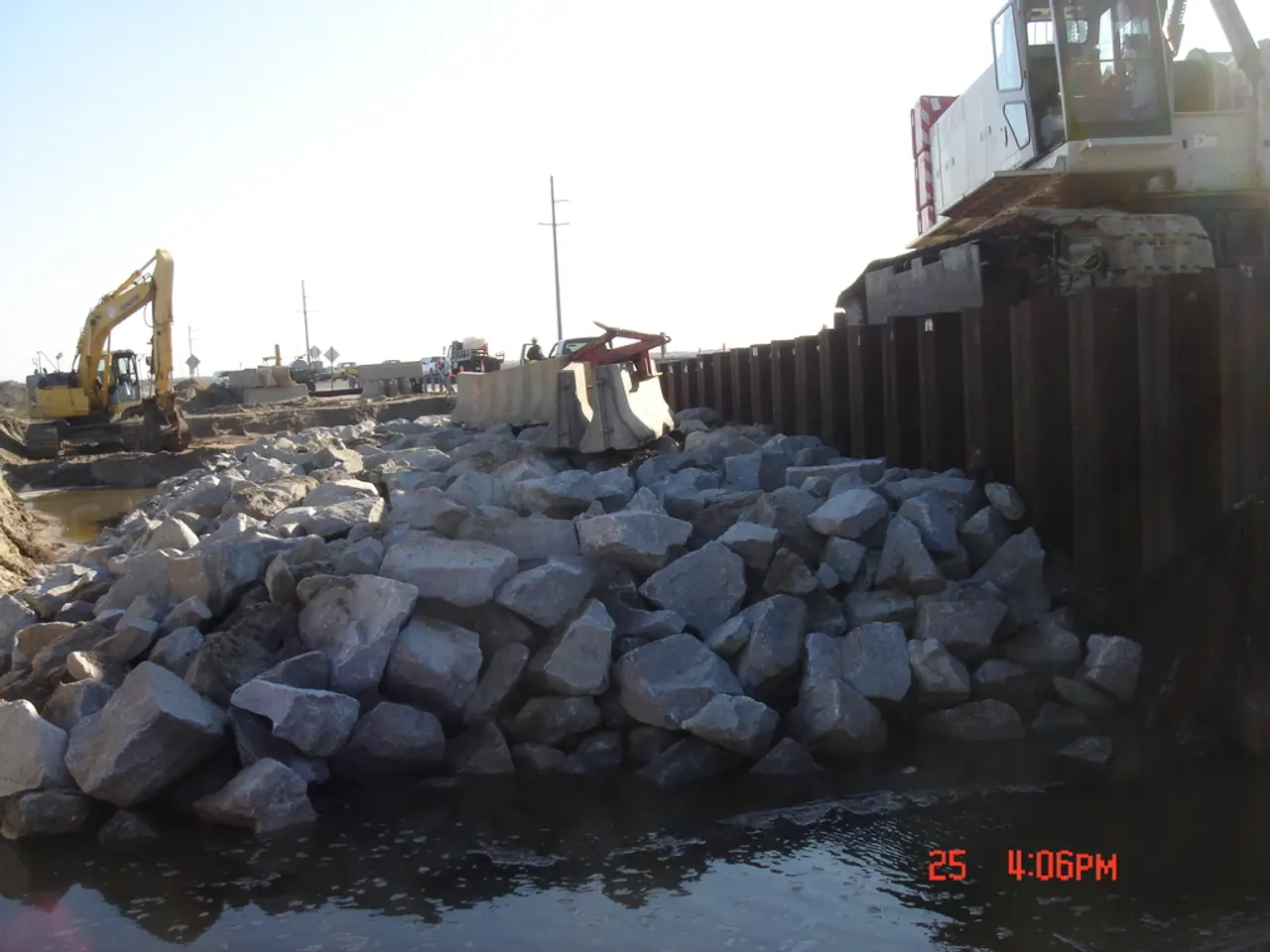Construction of SSE's 4.1 GW Berwick Bank Offshore Wind Farm in Scotland Given the Green Light on Our Site
The Berwick Bank offshore wind farm, a groundbreaking project by SSE Renewables, was granted consent by the Scottish Government in July 2025. If fully developed, this wind farm will become the world's largest, with a capacity of 4.1 GW, capable of powering over six million homes annually[1][2][3].
The wind farm will be located approximately 38 km off the St Abbs coastline, with construction set to begin by December 2026 and operations commencing around December 2032[1][2][3]. The project will feature up to 307 turbines installed across a 1,010-square-kilometer site, along with up to ten offshore substations[1].
The Berwick Bank wind farm is poised to bring significant economic benefits. It is projected to inject GBP 8.3 billion of value into the UK economy over its lifetime, according to SSE Renewables[1]. The project could create 9,300 direct, indirect, and induced jobs in the UK at peak construction, with around 4,650 of these jobs in Scotland[1].
The offshore wind sector is expected to see employment growth from around 55,000 jobs today to approximately 100,000 by 2030, with jobs spanning engineering, port logistics, service, and maintenance[2]. These opportunities will provide high-quality, sustainable employment linked directly to the Berwick Bank and similar projects.
The Berwick Bank wind farm aligns with the UK's Clean Power 2030 mission and Scotland's decarbonisation and climate action goals, according to SSE Renewables' Managing Director, Stephen Wheeler[2]. The project's consent determination by Scottish ministers approves the project's main array in the outer Firth of Forth off the East Lothian coast[1].
The wind farm will connect to the UK national grid via two connection points: one at Branxton near Dunbar in East Lothian, Scotland, and another at Cambois near Blyth in Northumberland, northeast England[1]. The decision marks the last major consent necessary for the wind farm to proceed, culminating over a decade of development work by SSE Renewables on the project's design[1].
With the approval of the Berwick Bank wind farm, the UK moves one step closer to achieving energy security and net-zero goals, while driving massive renewable energy output and meaningful economic and employment benefits in Scotland and the UK[1][2]. This scale of investment and job growth underscores its transformational impact on the energy industry and related supply chains[1][2].
[1] SSE Renewables. (2025). Berwick Bank Wind Farm. [Online] Available at: https://www.sse.com/en/our-business/renewables/projects/berwick-bank-wind-farm
[2] Scottish Government. (2025). Scottish Government grants consent for Berwick Bank offshore wind farm. [Online] Available at: https://www.gov.scot/news/berwick-bank-wind-farm-consent/
[3] Press Association. (2025). World's largest offshore wind farm gets go-ahead. [Online] Available at: https://www.bbc.co.uk/news/uk-scotland-scotland-politics-57902032
- This groundbreaking wind farm, the Berwick Bank, located off the St Abbs coastline, is expected to inject £8.3 billion into the UK economy due to its substantial investment in renewable energy.
- The offshore wind sector, with the Berwick Bank wind farm as a significant player, is projected to see a surge in employment growth from approximately 55,000 jobs to around 100,000 by 2030, boosting environmental-science-, finance-, and industry-related jobs.
- The Berwick Bank wind farm, bridging the gap between science and market, aligns with the UK's Clean Power 2030 mission and Scotland's decarbonisation goals, marking a critical step towards energy security and net-zero targets.
- The wind farm's connection to the UK national grid via substations in East Lothian, Scotland, and Northumberland, northeast England, will drive meaningful energy output, solidifying the importance of this industry and its associated supply chains.




